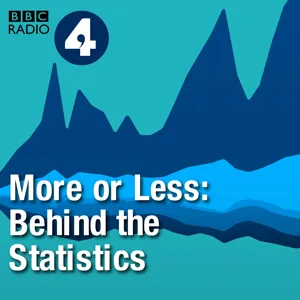Podcast Summary
Language Extinction: One language disappears every two weeks, reminding us of the urgency to preserve and document the world's linguistic diversity before they all disappear, leaving us with a loss of cultural knowledge and history.
Every two weeks, a language disappears from the world. This statistic, which can be found in various sources from newspapers to the United Nations, is a significant reminder of the cultural impact of language extinction. The Last Speaker of the Akobo language, Boer Senior from the Andaman Islands, sang in a language that no longer exists as she was its last speaker. Researchers have catalogued over 7,000 languages spoken around the world, but half of them are spoken by fewer than 8,000 people. The loss of a language is a deeply significant moment in the cultural life of communities. Gary Simon, the executive editor of the Language Catalog Ethnologue, which dates back to 1951, has made it his mission to track what is known about every language on Earth. The Ethnologue has a network of people on the ground providing updates and receiving contributions. The estimate of one language dying every two weeks is not an exact number, but it serves as a reminder of the urgency to preserve and document the world's linguistic diversity before it's too late.
Language extinction: Approximately one language dies every two weeks, and it's crucial that we take steps to preserve language diversity as part of our global cultural heritage.
There is a significant concern among linguists about the number of languages that are at risk of disappearing. In the late 1990s, a linguist named Michael Krause predicted that by the end of this century, 90% of the world's languages could die out. However, this figure was later revised down to 50% by linguist David Crystal in his book "Language Death" published in 2000. This means that approximately one language dies every two weeks. These estimates were based on the urgent need for linguists to get involved in saving endangered languages. It's important to note that these predictions are not definitive, but rather estimates based on current trends. Linguists and organizations around the world are working to preserve these languages and cultures, but it's a complex and ongoing process. The key takeaway is that language diversity is an essential part of our global cultural heritage, and it's crucial that we take steps to preserve it.
Language Death: One language dies every 40 days, driven by urbanization and colonialism, but preservation efforts are crucial for maintaining linguistic and cultural diversity
The future of many languages around the world is uncertain, with estimates suggesting that between 20% and 80% of the world's 7,000 languages could die out in the next century. However, current rates suggest that around one language every 40 days is dying, which is lower than previous predictions. Historically, language death has been driven by colonialism, but urbanization may be accelerating this trend as indigenous people move to urban centers for work. It's important to note that the "doom" of a language doesn't mean it's already extinct, but rather that it's on the verge of extinction, with the youngest speakers being elderly. This is a significant issue as losing languages means losing unique cultural and historical knowledge. Therefore, efforts to preserve and revitalize endangered languages are crucial for maintaining linguistic and cultural diversity.
Endangered Languages: More than half of the world's languages are predicted to be dormant, extinct, or doomed by the end of the century due to lack of use by younger generations, but collective action can help preserve them.
According to current data, around 55% of the world's languages are predicted to be dormant, extinct, or doomed by the end of the century. This is based on the fact that 10% of languages are already dormant or extinct, another 15% are currently doomed due to lack of use by children and youth, and an additional 30% are projected to reach this state based on current trends. This equates to one language becoming doomed every 12 days. However, there is a possibility that this prediction could be proved wrong through collective action to preserve and revitalize endangered languages.
Language preservation: Preserving languages through formal learning may not fully maintain their authenticity and richness, emphasizing the importance of community engagement in language preservation.
It's crucial for us to engage with communities and support them in preserving their languages before it's too late. When natural language transmission can no longer occur, these languages can only continue through formal learning. However, this approach may not fully maintain the authenticity and richness of the language as it was originally passed down through generations. It's essential to remember that every language holds unique cultural significance and heritage for its community. Thanks to Gary Simons for shedding light on this issue. On a different note, if you're interested in the economics history of the world, tune in to Planet Money Summer School. Each Wednesday until Labor Day, you'll find fascinating episodes about the origins of money, banks, and finance on the Planet Money podcast from NPR. Get ready for tales of rogues, revolutionaries, and economic panics.
